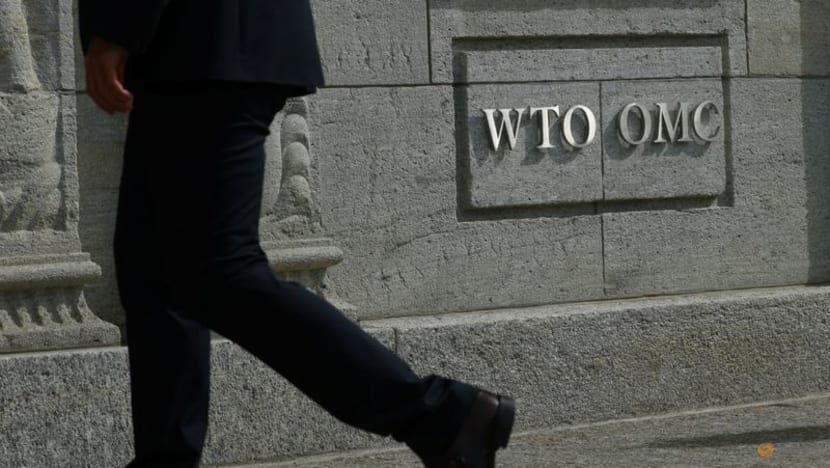Average US tariffs top 20%, back to 1910s levels: WTO and IMF

FILE PHOTO: A logo is pictured outside the World Trade Organisation (WTO) in Geneva, Switzerland, September 28, 2021. REUTERS/Denis Balibouse/File Photo
PARIS: The average US tariff rate has risen to 20.1 per cent, its highest level since the early 1910s – except for a brief spike earlier this year, after new duties took effect on Thursday (Aug 7), data from the World Trade Organization (WTO) and International Monetary Fund (IMF) showed on Friday.
The figure is far above the 2.4 per cent average in place when President Donald Trump took office on Jan 20, 2017.
Trump’s April 2 announcement of “reciprocal” tariffs on the United States’ main trading partners, followed by further increases on Chinese goods, briefly drove the average rate to 24.8 per cent in May, a figure last seen in 1904, according to the United States International Trade Commission.
A trade truce later eased the record tariff levels between Washington and Beijing, but that arrangement is set to expire next week.
TRADE DEALS AND NEW DUTIES
The WTO and IMF calculations factor in recent US trade agreements with the European Union, Japan, South Korea and other nations, which have now taken effect.
The figures also include the latest US tariffs applied to Brazil, Canada and imports of semi-finished copper. These agreements generally imposed lower tariffs than those threatened by Trump in April, but were still higher than the baseline 10 per cent rate introduced earlier in his administration.
RATES AT HISTORIC HIGHS
The updated average exceeds the nearly 20 per cent rate the United States imposed in the 1930s – an era of protectionism that economists widely believe deepened and prolonged the Great Depression.
However, the WTO and IMF stressed that the rate is based on 2024 trade volumes. Actual impacts may differ, as companies have already altered behaviour by stockpiling goods, delaying purchases or shifting suppliers to avoid higher duties.
According to the Budget Lab at Yale University, once changes in consumption patterns and knock-on effects are considered, the effective rate could drop to about 17.7 per cent – unless Trump imposes further duties.















